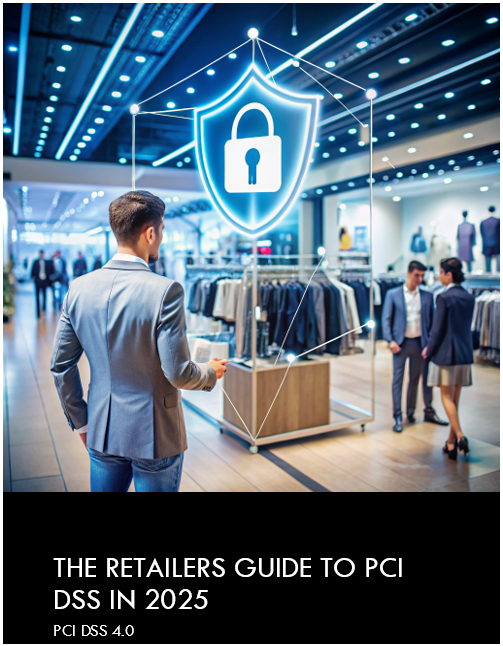In a time where the digital sphere continues to burgeon with relentless fervor, the need for effective cybersecurity measures, content management protocols, and a keen focus on user safety is undeniable. Nowhere is this more evident than the recent developments in Ireland, which has introduced a new Online Safety Code aimed at video-sharing platforms such as TikTok. This substantial move denoting considerable regulatory scrutiny shines a spotlight on the ever-evolving digital panorama, setting a precedent that is bound to resonate with the global tech landscape.
Understanding the Backdrop: Ireland’s Online Safety Code
Ireland, known for its serene landscapes and rich lore, has recently made a consequential move in the digital world. The Online Safety Code arises from its concerted efforts to create more secure spaces in the digital discourse, especially for the younger audience frequenting platforms like TikTok.
It sets essential security standards, ensuring that digital platforms are operating conscientiously, providing robust systems for reporting, redressing grievances, and controlling access to content.
Perhaps, the most impressive aspect of this online safety code is the role Ireland gets to play—regulating major platforms with their regional headquarters in Ireland, such as Twitter, Facebook, and Google. This embodies a unique perspective on digital regulation, projecting Ireland’s committed focus on online safety and cybersecurity.
The Implications: What Does It Mean for Platforms and Users?
Assuming an ongoing Digital Gala where tech companies aim to impress users with their latest enhancements, Ireland’s Online Safety Code would undoubtedly be a crucial parameter on the scorecards.
For brands like TikTok, aligning with these regulations might initially appear challenging. Notwithstanding the regulatory hurdles, creating safer spaces enhances user engagement, and is a challenge that these platforms tend to adeptly grapple with in pursuit of their digital dominance.
The application of these stringent measures can harbor a more secure browsing experience for users. However, certain content previously accessible might now be deemed inappropriate and therefore restricted, a slight change in browsing freedom that users will need to adapt to.
Summary of the Coimisiún na Meán Online Safety Code
The Coimisiún na Meán Online Safety Code aims to enhance online safety, especially for children, by regulating video-sharing platforms. It introduces measures aligned with the EU Digital Services Act (DSA) and the Online Safety and Media Regulation Act of 2022, focusing on user protections and accountability for platforms. Key aspects include:
- Platform Responsibilities: Platforms must restrict harmful content (e.g., cyberbullying, self-harm promotion, incitement to hatred) and apply age assurance measures to prevent children’s access to unsuitable material.
- Content Regulation: User-generated content and audiovisual commercial communications face stricter controls, including content labeling and transparency about paid promotions.
- Parental Controls: Platforms are required to provide parental controls, enabling parents to manage their children’s online content access.
- Enforcement and Accountability: Failure to comply can lead to enforcement actions, including service suspensions for users who repeatedly violate terms.
Implications for Users
- Increased Content Moderation: Users may find more content flagged or removed, as platforms enforce stricter guidelines against harmful and illegal content.
- Enhanced Safety for Children: Parents gain better control over what their children can access, with mandatory age verification systems reducing exposure to harmful materials.
- More Transparency in Advertising: Users can expect clearer identification of sponsored content, helping them distinguish between organic and paid material.
Implications for Businesses Using Social Media for Marketing
- Stricter Advertising Rules: Businesses must ensure that any content shared aligns with the new guidelines, particularly concerning transparency and declarations of paid partnerships.
- Targeting and Age Restrictions: Marketing efforts may face challenges if targeting younger audiences, as platforms implement stricter age-verification measures.
- Compliance Costs: Businesses might need to adjust their content strategies and invest in compliance to meet new requirements, potentially increasing operational costs.
- Content Visibility: Advertisements and other commercial content may be subject to more scrutiny, impacting visibility if deemed unsuitable under the new standards.
The Future Landscape: Where Do We Go from Here?
As we zoom out from our hypothetical Digital Gala and refocus on the real world, the question emerges: What implications does this have for businesses, internet users, and authorities at large?
With the inception of such safety protocols, other countries might follow suit soon, establishing more comprehensive digital regulation norms. Businesses, big or small, need to be cognizant of these developments. Compliance with these standards can reflect positively in their overall brand image, while non-compliance might invite risks potentially tarnishing their reputation and operational efficiency.
The future points towards more controlled creativity, more responsible technology, and more comprehensive scrutiny, making cybersecurity an undeniable facet of this digital revolution. It’s crucial not just to dream up revolutionary technological ideas but to ensure they safeguard and maintain the safety of digital citizens.
If you’re interested in understanding more about these constant changes in digital safety, effective content management, and regulatory compliance, feel free to connect. Together, we can navigate through these digital waters, ensuring the journey remains secure and pleasant. After all, in this digital world, we’re all in the same boat, aren’t we? Let’s sail safe.





